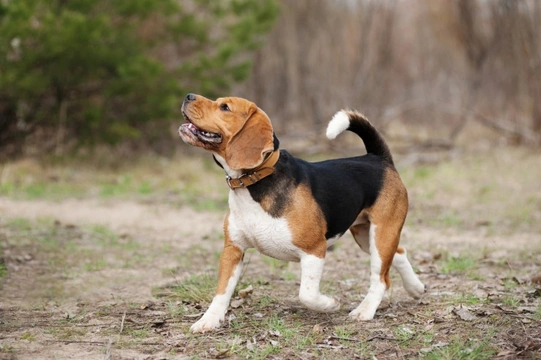
Most Excitable Dog Breeds: Top 6 Energetic Pets
Dogs are known for their lively enthusiasm and zest for life, but some breeds are particularly excitable, bringing boundless energy and joy to their families. Whether you're considering adopting or buying an energetic dog, understanding the needs and characteristics of these spirited breeds will help you provide the right environment for them to thrive.
This article reveals the six most excitable dog breeds, based on renowned research and expert insights, along with advice on responsible ownership and managing their lively nature.
The Beagle
The Beagle is a cheerful, vocal breed originally bred for hunting. Their curiosity and strong sense of smell lead to immense enthusiasm for exploration, making them highly excitable. Beagles thrive in homes that can offer plenty of physical exercise and mental stimulation through scent games and social interaction. Responsible owners ensure secure outdoor spaces to prevent escape, as their hunting instincts can drive them to wander.
The Cairn Terrier
The Cairn Terrier, a spirited native of Scotland, is lively and tenacious. Their intelligence and energy make them easily bored without adequate play and challenges. These terriers do well with interactive toys and tasks that channel their drive positively. Owners must provide both physical exercise and mental activities to keep these excitable dogs content and well-behaved.
The Yorkshire Terrier
The Yorkshire Terrier, affectionately known as the Yorkie, is one of the UK's most popular small breed dogs. Despite their small size, they have a bold and lively temperament, often greeting visitors with enthusiastic barking. Yorkies require daily playtime and stimulation to channel their energy and avoid behavioural issues. Regular grooming is essential to maintain their silky coats. For anyone seeking Yorkshire Terrier puppies, it's important to use reputable breeders to ensure healthy, well-socialised dogs.
The Miniature Schnauzer
The Miniature Schnauzer is a compact, excitable breed with a distinctive beard and bushy eyebrows. They are intelligent, playful, and require substantial exercise and mental challenges to prevent frustration. This breed enjoys games with owners and can be territorial, using barking to alert to strangers. Effective training and consistent activity help manage their lively behaviour and foster a calm household atmosphere.
The West Highland Terrier
The West Highland Terrier, or Westie, is a popular small Scottish breed adored across the UK. While loving and personable, Westies are spirited and enjoy vigorous play, walks, and challenges. Younger Westies can be particularly excitable but with proper socialisation and physical outlets, they maintain their happy nature into adulthood. Owners can find West Highland Terrier puppies to join their families through trusted breeders who prioritise health and temperament.
The Fox Terrier
The Fox Terrier is a lively, energetic terrier breed, historically bred for fox hunting. They retain an innate zest for activity and require consistent and intense exercise to keep them mentally and physically fulfilled. Fox Terriers thrive in active homes where their spirited nature is matched with structured play and companionship, especially with children who can match their enthusiasm. Owners should provide training and plenty of outlets for energy to prevent destructive behaviours.
Tips for Managing Excitable Dog Behaviour
- Consistent Routine: A daily schedule of walks, play, and rest helps excitable dogs anticipate activity and relax during downtime.
- Mental Challenges: Use puzzle toys, obedience training, and scent games to engage your dog's mind and reduce over-excitement from boredom.
- Exercise Requirements: Ensure ample exercise tailored to breed needs; terriers and Beagles especially need vigorous activity to burn energy healthily.
- Positive Reinforcement: Reward calm behaviour with treats and affection to encourage self-control and reduce hyperactivity.
- Safe Environment: Provide a secure garden or exercise area to prevent roaming driven by excitable impulses.
Choosing a Responsible Breeder or Adoption Centre
Whether you plan to buy or adopt, selecting your new dog from reputable sources is vital. Look for reputable breeders who conduct health screenings and socialise puppies well. Rescue centres may also have lively breeds looking for loving homes. Responsible choices contribute to happier pets and support ethical animal welfare practices.
Conclusion
Excitable dog breeds add a lively spark to any household but require owners ready to meet their exercise and stimulation needs. By understanding each breed’s personality and providing responsible care, you can enjoy a happy, energetic companion for years. Remember to source from reputable breeders or rescue centres to ensure your new pet’s health and happiness.



